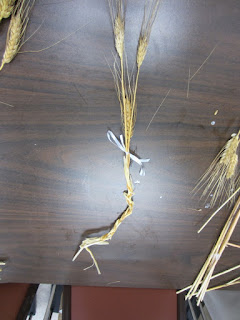Welcome to The Psalms, the Godly Play story scheduled for this Sunday, Nov 1, based on the book of Psalms. I've emailed you the story script, which includes the first part of the David story from last week, found in the pink Enrichment Presentations for Fall, p.81. If you are not a Sunday school teacher at FBC Greenville and would like a copy of the Psalms story script, just email me and I'd be happy to send it to you.
 To share the Psalms, we're going to use a beautiful book, Psalms for Young Children,
written by Marie-Helene Delval and illustrated by Arno. In this book,
Ms. Delval has adapted the psalms for children in a way that is so easy
to read and to relate to. I've purchased one for each class (except for
3rd grade, which already had a copy.) You'll find it in your story
basket, which I left near your Bible bookcase. I put it there to remind
you (and me) that you'll need the Bible Bookcase as you tell the story.
(You'll take the Psalms book out and place it on the underlay in part of
the story.
To share the Psalms, we're going to use a beautiful book, Psalms for Young Children,
written by Marie-Helene Delval and illustrated by Arno. In this book,
Ms. Delval has adapted the psalms for children in a way that is so easy
to read and to relate to. I've purchased one for each class (except for
3rd grade, which already had a copy.) You'll find it in your story
basket, which I left near your Bible bookcase. I put it there to remind
you (and me) that you'll need the Bible Bookcase as you tell the story.
(You'll take the Psalms book out and place it on the underlay in part of
the story.By the way, the Psalms in this book are shared in order (by number.) They're so short that I think you'll find it hard to stop reading them!
To help the children follow along with the different emotions we'll be discussing I've made emotion cards for each class.
Older children might enjoy comparing the Psalms as written in the Bible with Marie Helene Delval's adaptations. They might like making their own adaptations as well. You might want to choose one Psalm to focus on, like #23 or 139.
The wondering questions are included in the story script.
Ideas for Your Give a Gift to God time:
1. Writing our own Psalms--Have children pick an emotion that they sometimes feel and write God a prayer or song that they might pray or sing while feeling that way.2. Write a psalm showing how you feel today. Draw a picture to go with it.
Or read a psalm to a friend that shows how you feel.
3. Illustrate a Psalm. Choose a psalm and illustrate it, like Arno did in Psalms for Young Children. (Any Psalm would be good. If you want, you could choose the psalm for the children, like #23 or 139.)
4. Write a psalm together as a class, and then let the children illustrate it individually or together.
5. Work out a tune that fits a psalm that you like. Or write your own to sing.
6. Make instruments to play while singing a psalm. You can find directions to make a simple tambourine here, and a lyre here.
I hope you enjoy the lesson! :)
Love, Becky



















